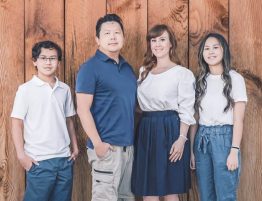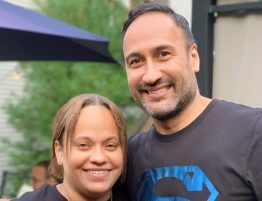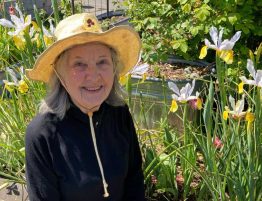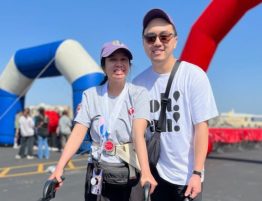
Like many actors in Los Angeles, Michael Shutt had a second job. As a bartender at a restaurant, he had flexible hours and a reliable income with benefits.
Shutt worked the day shift so he could devote his evenings to a theater company where he acted, directed, produced, helped develop scripts and more.
During a busy afternoon of tending bar, he felt something like a jolt of electricity tear through his body. Suddenly, he couldn’t control his left hand. His mind felt jumbled. He had trouble speaking.
Several co-workers noticed something was wrong. Shutt couldn’t explain it. Everyone kept working.
Although his left hand remained numb and his mind foggy, he worked the next day. The following day, he played kickball. He was a pitcher known for precision; that day, he gave up a run by walking the first four kickers.
The next evening, a Sunday, when he went to open a bottle of wine, he couldn’t remember or figure out how. That finally sent him to urgent care – on Monday morning.
Shutt’s blood pressure was dangerously high. He was sent to the emergency room.
The results from an MRI showed he’d had an ischemic stroke. He was 48.
Ischemic strokes are the most common type of stroke, in which a blood vessel in the brain is blocked by either a clot or by a buildup of fatty deposit and cholesterol.
Shutt hadn’t been to a doctor in years and was unaware of having high blood pressure, a leading cause of stroke. He was given medication to control his blood pressure. After a few days in the hospital, his deficits from the stroke were mostly gone and he headed home.
“If anything like this happens again, call 911 immediately and tell them you think you’re having a stroke,” a nurse told him when he left the hospital.
“Time is brain,” she added.
Shutt treated the stroke as a wake-up call. He cleaned up his diet, exercised regularly and lost 20 pounds in a few months.
Three and a half months later, in September 2015, Shutt went through an upper-body workout and ran 3 miles on the treadmill. Walking downstairs at the gym, his vision began to swirl. He grabbed the railing and inched his way out the door.
His first instinct was to get to his car, but he couldn’t see well enough to find it. He used his key fob to activate his car’s lights and horn. He put the key in the ignition, then thought, “You should not be driving.”
Time is brain, he remembered. He called 911.
“I think I’m having a stroke,” he told the 911 operator.
At the hospital, Shutt received clot-busting medication. Almost immediately, he could see again.
Doctors could find no reason for his second stroke, but they kept Shutt in the hospital for testing. As that played out, he had a third stroke.
Over the next week, Shutt began coming to grips with his new reality. He had severe double vision. He could hardly move the left side of his body. He could feel words forming in his brain, but they wouldn’t come out of his mouth. He also had prosopagnosia, or “face blindness,” meaning he couldn’t recognize people’s faces.
Feeling devastated and confused, he was moved to an acute care rehabilitation facility to work with all sorts of specialists.
“I’m going to be the best stroke patient ever,” he told himself.
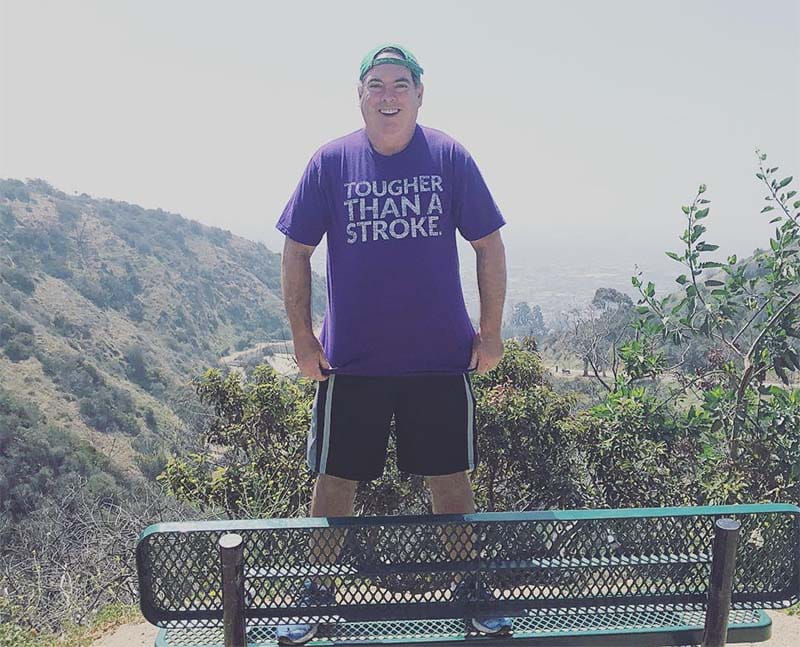
Brandon Carrette was among the many friends who visited Shutt. They’d met playing kickball and bonded over their Boston-area backgrounds. Carrette, some two decades younger, considered Shutt an older brother.
Carrette is also a registered nurse. When he first saw his friend in the hospital, he knew that Shutt would be facing “a new normal.” He became one of Shutt’s biggest boosters.
“Take ‘can’t’ out of your vocabulary and focus on what you can do,” Carrette told his friend. “Write down your small wins every day, and you will see progress.”
If Shutt remembered a doctor’s name, that was a win. Walking 10 feet on his own? Add it to the list.
His faith in neuroplasticity, the brain’s ability to change and adapt, kept him going.
About a month later, Shutt was discharged. He went home and continued outpatient therapy. His parents moved in with him for half a year to help out.
The following summer – roughly a year since his first stroke – Shutt completed outpatient rehab with mixed results. He could walk, but his vision did not improve, and he could hardly use his left hand. He had moments of confusion and times of serious fatigue.
When doctors told him he’d likely never regain full use of his left hand, he set out to prove them wrong.
Every day, he typed. In the beginning, his left hand could only last a few minutes. Over time, that evolved into an hour, then longer.
Shutt had already started writing his thoughts as a way to process them. Now he started typing short first-person stories filled with humor, love, sorrow and vulnerability. He began to perform them, memorizing every line. He felt purpose and passion.
Enlisting the help of his theater friends, Shutt went on to create a 90-minute show called “A Lesson in Swimming,” starring himself.
“It’s classic Michael,” Carrette said. “He can find humor in the negative and then express deep feelings about it. It’s been amazing to see him thrive creatively. He blows me away.”
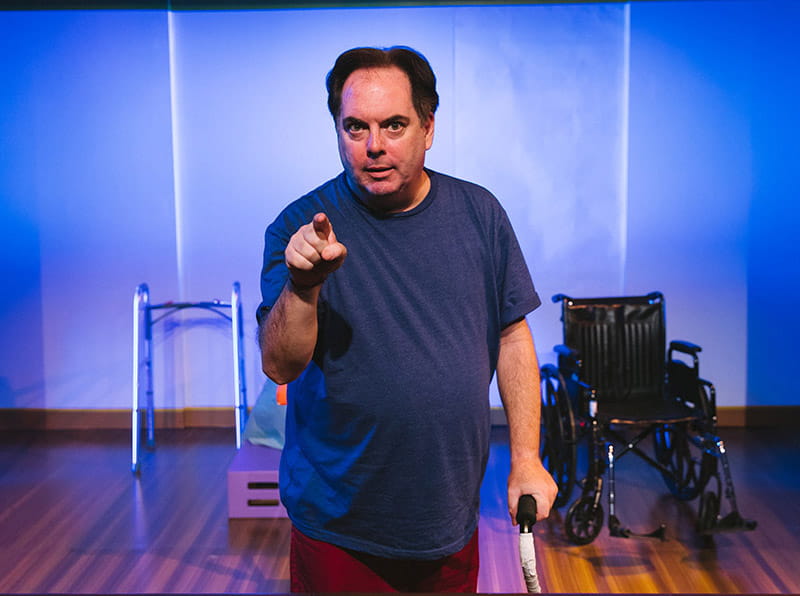
The performance is Shutt’s way of reframing his experience, his limitations (such as his vision) and his feelings.
“Having the stroke was hard enough,” he said. “What no one prepared me for were the moments of isolation and loneliness that goes along such an invisible injury.”
Shutt hopes his performance can spread awareness of stroke symptoms and the idea that “time is brain.” He also wants to send the message of what stroke survivors can do.
“I refused to let the stroke define me,” he said. “Instead, I chose to use the stroke as an opportunity to redefine myself.”
Stories From the Heart chronicles the inspiring journeys of heart disease and stroke survivors, caregivers and advocates.
If you have questions or comments about this American Heart Association News story, please email [email protected].


